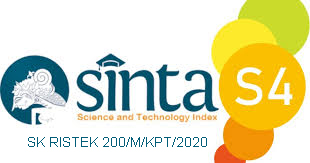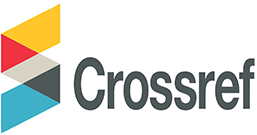Battery Performance Evaluation through Decision Tree
Abstract
This study addresses the pervasive concern surrounding battery performance degradation in electronic devices. While some attribute this decline to device aging, a significant portion of the population lacks awareness of the precise factors contributing to diminished battery efficiency. Consequently, the research investigates the factors related to battery performance, aiming to identify the determinants of reduced efficiency. Decision trees are used to meticulously analyze the intricate relationships between variables and discern the factors that respondents perceive as causative of diminished battery performance. This algorithm is chosen since, in predicting high-capacity lithium-ion battery performance, the decision tree outperforms other algorithms in machine learning in accuracy. The study elucidates diverse user preferences, with 55.38% favoring Android and 44.62% expressing a preference for iOS, indicating disparate perceptions of battery health: 61.54% consider their batteries as "Good," while 38.46% acknowledge a decline. The decision tree analysis of 195 participants underscores the pronounced impact of prolonged usage on battery health, revealing that 95% maintain good battery performance. In contrast, 27.69% of Android users face reduced battery performance, emphasizing the need for targeted user education and Android manufacturers to prioritize device longevity. The ultimate objective is to give readers a comprehensive understanding of the dynamics of battery performance in the context of device aging and its contributing factors and give some input to manufacturers and service providers.
Keywords
Full Text:
PDFReferences
B. Wang, Y. Liu, and S. K. Parker, “How does the use of information communication technology affect individuals? A work design perspective,” Acad. Manag. Ann., vol. 14, no. 2, pp. 695–725, 2020.
J. M. Twenge, “Why increases in adolescent depression may be linked to the technological environment,” Curr. Opin. Psychol., vol. 32, pp. 89–94, 2020.
B. L. Moorhouse and K. M. Wong, “Blending asynchronous and synchronous digital technologies and instructional approaches to facilitate remote learning,” J. Comput. Educ., vol. 9, no. 1, pp. 51–70, 2022, doi: 10.1007/s40692-021-00195-8.
A. Mahmood, A. Ahmed, M. Naeem, M. R. Amirzada, and A. Al-Dweik, “Weighted utility aware computational overhead minimization of wireless power mobile edge cloud,” Comput. Commun., vol. 190, pp. 178–189, 2022.
R. Arfika and M. Safii, “Analysis of Decreased Public Awareness in the Application of Health Protocols with the C4. 5. Algorithm,” J. Artif. Intell. Eng. Appl., vol. 1, no. 1, pp. 66–70, 2021.
D. Puthal et al., “Decision tree based user-centric security solution for critical IoT infrastructure,” Comput. Electr. Eng., vol. 99, p. 107754, 2022.
T. Xu, Y. Zhou, A. Raake, and X. Zhang, “Analyzing Impact Factors for Smartphone Sharing Decisions Using Decision Tree,” in Human-Computer Interaction. Interaction in Context: 20th International Conference, HCI International 2018, Las Vegas, NV, USA, July 15–20, 2018, Proceedings, Part II 20, 2018, pp. 628–637.
M. A. Alves et al., “Explaining machine learning based diagnosis of COVID-19 from routine blood tests with decision trees and criteria graphs,” Comput. Biol. Med., vol. 132, p. 104335, 2021.
M. Tran et al., “Python‐based scikit‐learn machine learning models for thermal and electrical performance prediction of high‐capacity lithium‐ion battery,” Int. J. Energy Res., vol. 46, no. 2, pp. 786–794, 2022.
L. Ardito, R. Coppola, M. Morisio, and M. Torchiano, “Methodological guidelines for measuring energy consumption of software applications,” Sci. Program., vol. 2019, pp. 1–16, 2019.
P. K. D. Pramanik et al., “Power consumption analysis, measurement, management, and issues: A state-of-the-art review of smartphone battery and energy usage,” IEEE Access, vol. 7, pp. 182113–182172, 2019.
S. LaMonaca and L. Ryan, “The state of play in electric vehicle charging services–A review of infrastructure provision, players, and policies,” Renew. Sustain. energy Rev., vol. 154, p. 111733, 2022.
J. Liu, Z. Wang, and J. Bai, “Influences of multi factors on thermal runaway induced by overcharging of lithium-ion battery,” J. Energy Chem., vol. 70, pp. 531–541, 2022.
J. Yang, F. Gu, J. Guo, and B. Chen, “Comparative life cycle assessment of mobile power banks with lithium-ion battery and lithium-ion polymer battery,” Sustainability, vol. 11, no. 19, p. 5148, 2019.
T. A. Chupilko, Y. V Ulianovska, M. F. Mormul, and O. M. Shchitov, “Python for data processing and modeling indicators of economic security of the country,” 2023.
N. N. Wilim and R. S. Oetama, “Sentiment Analysis About Indonesian Lawyers Club Television Program Using K-Nearest Neighbor, Naïve Bayes Classifier, And Decision Tree,” IJNMT (International J. New Media Technol., vol. 8, no. 1, pp. 50–56, 2021, doi: 10.31937/ijnmt.v8i1.1965.
J. Souza and C. K. Leung, “Explainable artificial intelligence for predictive analytics on customer turnover: A user-friendly interface for non-expert users,” Explain. AI Within Digit. Transform. Cyber Phys. Syst. XAI Methods Appl., pp. 47–67, 2021.
N. Benediktus and R. S. Oetama, “The decision tree c5. 0 classification algorithm for predicting student academic performance,” Ultim. J. Tek. Inform., vol. 12, no. 1, pp. 14–19, 2020.
C. Zheng, “A novel classification tree based on local minimum Gini index and attribute partial order structure diagram,” Int. J. Comput. Appl. Technol., vol. 64, no. 1, pp. 33–45, 2020.
M. Docharkhehsaz, T. Hashemi Nosratabad, M. Beirami, and M. T. Sattari, “Investigation of the Differential Power of Young’s Internet Addiction Questionnaire Using the Decision Stump Tree,” Comput. Intell. Neurosci., vol. 2022, 2022.
V. G. Costa and C. E. Pedreira, “Recent advances in decision trees: An updated survey,” Artif. Intell. Rev., vol. 56, no. 5, pp. 4765–4800, 2023.
DOI: https://doi.org/10.31326/jisa.v7i1.1796
Refbacks
- There are currently no refbacks.
Copyright (c) 2024 Jevelin Jevelin, Raymond Sunardi Oetama

This work is licensed under a Creative Commons Attribution-ShareAlike 4.0 International License.
JOURNAL IDENTITY
Journal Name: JISA (Jurnal Informatika dan Sains)
e-ISSN: 2614-8404, p-ISSN: 2776-3234
Publisher: Program Studi Teknik Informatika Universitas Trilogi
Publication Schedule: June and December
Language: English
APC: The Journal Charges Fees for Publishing
Indexing: EBSCO , DOAJ, Google Scholar, Arsip Relawan Jurnal Indonesia, Directory of Research Journals Indexing, Index Copernicus International, PKP Index, Science and Technology Index (SINTA, S4) , Garuda Index
OAI address: http://trilogi.ac.id/journal/ks/index.php/JISA/oai
Contact: jisa@trilogi.ac.id
Sponsored by: DOI – Digital Object Identifier Crossref, Universitas Trilogi
In Collaboration With: Indonesian Artificial Intelligent Ecosystem(IAIE), Relawan Jurnal Indonesia, Jurnal Teknologi dan Sistem Komputer (JTSiskom)
JISA (Jurnal Informatika dan Sains) is Published by Program Studi Teknik Informatika, Universitas Trilogi under Creative Commons Attribution-ShareAlike 4.0 International License.


















